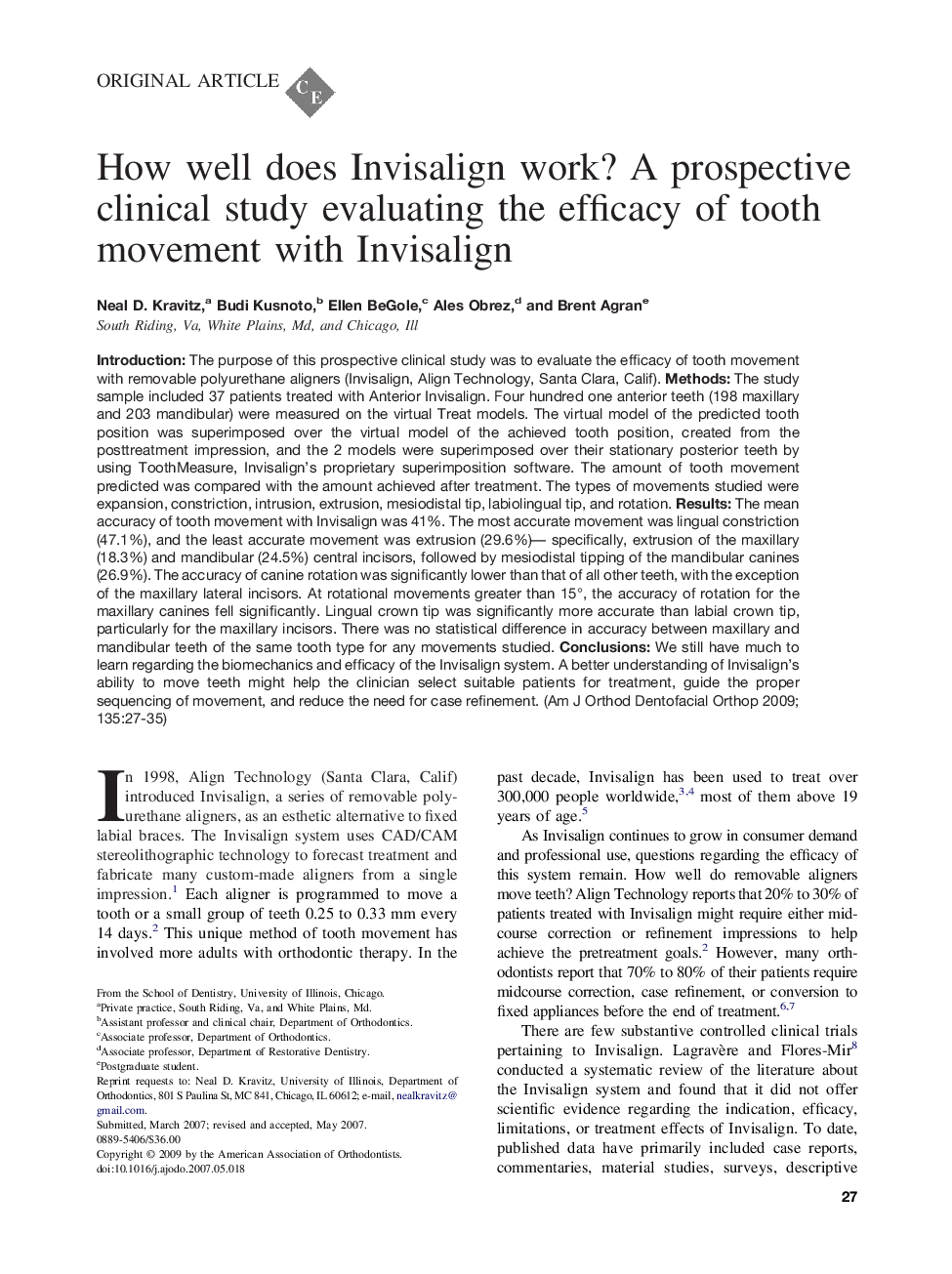| کد مقاله | کد نشریه | سال انتشار | مقاله انگلیسی | نسخه تمام متن |
|---|---|---|---|---|
| 3120072 | 1582772 | 2009 | 9 صفحه PDF | دانلود رایگان |

IntroductionThe purpose of this prospective clinical study was to evaluate the efficacy of tooth movement with removable polyurethane aligners (Invisalign, Align Technology, Santa Clara, Calif).MethodsThe study sample included 37 patients treated with Anterior Invisalign. Four hundred one anterior teeth (198 maxillary and 203 mandibular) were measured on the virtual Treat models. The virtual model of the predicted tooth position was superimposed over the virtual model of the achieved tooth position, created from the posttreatment impression, and the 2 models were superimposed over their stationary posterior teeth by using ToothMeasure, Invisalign's proprietary superimposition software. The amount of tooth movement predicted was compared with the amount achieved after treatment. The types of movements studied were expansion, constriction, intrusion, extrusion, mesiodistal tip, labiolingual tip, and rotation.ResultsThe mean accuracy of tooth movement with Invisalign was 41%. The most accurate movement was lingual constriction (47.1%), and the least accurate movement was extrusion (29.6%)— specifically, extrusion of the maxillary (18.3%) and mandibular (24.5%) central incisors, followed by mesiodistal tipping of the mandibular canines (26.9%). The accuracy of canine rotation was significantly lower than that of all other teeth, with the exception of the maxillary lateral incisors. At rotational movements greater than 15°, the accuracy of rotation for the maxillary canines fell significantly. Lingual crown tip was significantly more accurate than labial crown tip, particularly for the maxillary incisors. There was no statistical difference in accuracy between maxillary and mandibular teeth of the same tooth type for any movements studied.ConclusionsWe still have much to learn regarding the biomechanics and efficacy of the Invisalign system. A better understanding of Invisalign's ability to move teeth might help the clinician select suitable patients for treatment, guide the proper sequencing of movement, and reduce the need for case refinement.
Journal: American Journal of Orthodontics and Dentofacial Orthopedics - Volume 135, Issue 1, January 2009, Pages 27–35